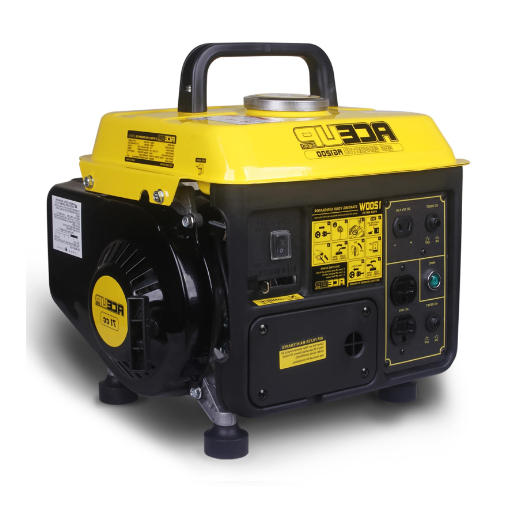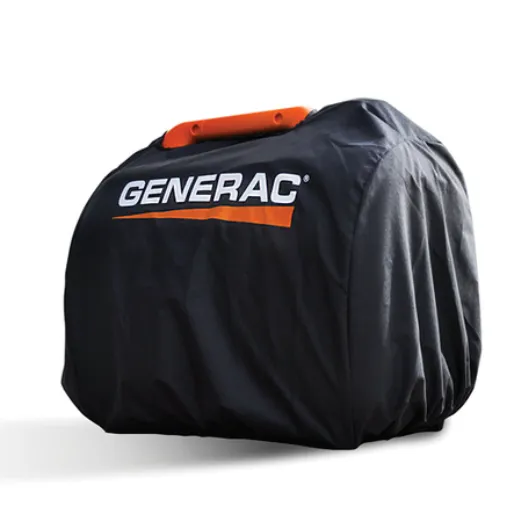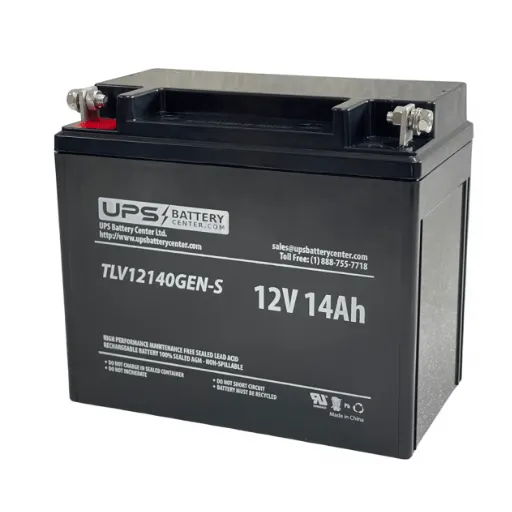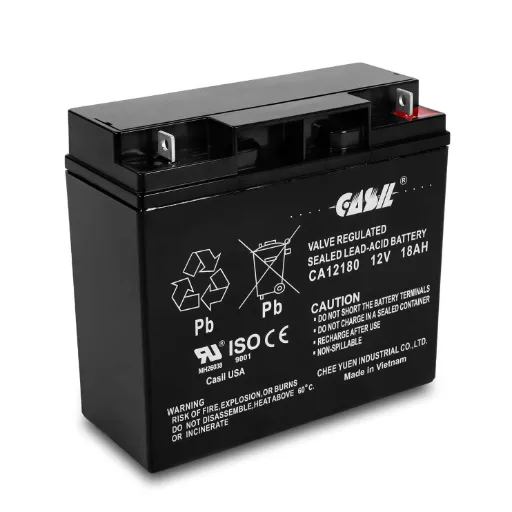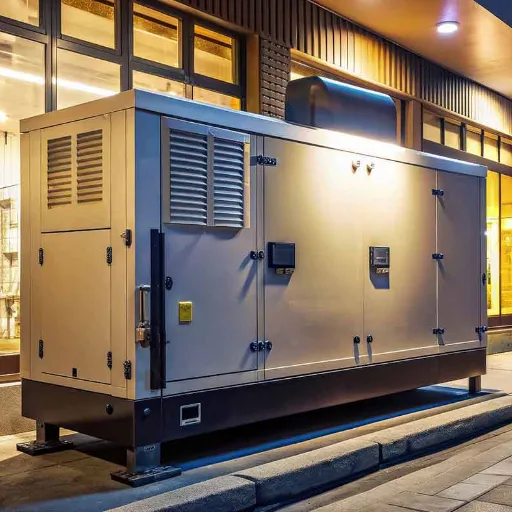Portable generators have become indispensable tools for ensuring reliable power in a variety of situations, from emergency backups during outages to on-the-go energy solutions for outdoor activities, construction sites, and RV trips. This guide is designed to provide a comprehensive overview of the best portable generators available today, focusing on affordability, performance, and reliability. By examining their features, power output, fuel efficiency, and suitability for different use cases, this article will help you make a well-informed decision tailored to your specific power needs.
How to choose the right size generator for your needs?
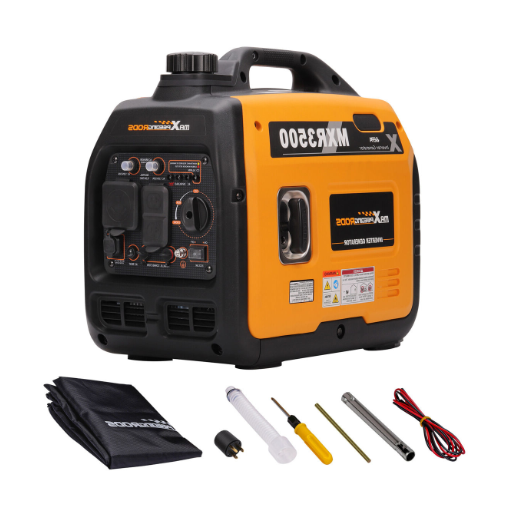
Understanding wattage requirements
One of the vital steps while selecting the right portable generator is understanding wattage requirements. To calculate this, I always start by estimating the appliances or devices that I would like to power. Each device has two key wattage values to keep in mind: starting watts and running watts. Starting watts is the additional power an appliance uses in its initial phase, while running watts indicates the power consumed during the average functioning of the appliance.
For instance, a refrigerator usually needs about 1,200 starting watts and 200 to 800 running watts. A microwave may need around 1,000 running watts, whereas a standard laptop just 50-100 running watts. In totality, if I account for the running watts of all the devices I would like to power, I can get the baseline. However, I consider the highest starting wattage in the mix to make sure my generator can withstand the surge when starting the devices.
It is instrumental to understand these measures. If the output of the generator fails to meet the total wattage expectations, it risks overloading, which would damage equipment or –at worse – compromise safety. As I meticulously calculate the wattage needs, I ensure the generator works seamlessly without hurting its capacity. From the safeguarding of my devices to the protection in the efficiency of my generator, this approach is beneficial in extending the longevity of the device.
Calculating power needs for home appliances
Understanding how to compute power needs is very important when using a portable generator. I usually start with the very basic formula of electrical power, which is Wattage (W) equals Voltage (V) Multiplied by Amperage (A).For instance, an appliance that works under 120 volts, 5 amps will require 600 watts.
Running wattage is the power an appliance needs while in operation, while starting wattage is the temporary power surge required for starting an appliance. For example, a refrigerator might require 1200 watts to start but would consume 200-800 watts on the running phase. Just like that, a small window AC unit can have running wattage at 1500 but surge power while starting at 2200.
I start by summing all the running wattage from the devices I wish to operate and subsequently add in the highest starting wattage from all of them. This addresses the issue of the generator not being able to support continuous and peak power demands. Failing to consider these numbers can lead to overloading the generator, damaging the appliances, or endangering everyone’s safety.
Not only does addressing power needs as described help me create an efficient and reliable setup, but it also reduces the risk of overloading the generator, its lifespan, and the functioning of other appliances. The effort spent on creating the setup gives peace of mind since there is a reliable backup power solution.
Portable generator sizing for RV use
Choosing the appropriate size of a generator for an RV comes down to understanding power consumption. I like to start with the list of appliances I plan to use and their running wattage and starting wattage. As a refresher, running wattage indicates the constant supply of power needed, while starting wattage considers the additional power used to turn the device on. In the case of my RV air conditioner, which is 13500 BTU, it can work with 2800 starting watts and 1500 running watts. Moreover, if I include a microwave, which has a running wattage of 1000, or a fridge with 200 to 600 running wattage, the total sum of watts will increase significantly.
In order to make sure the generator is adequate, I add all the running wattages and include the highest starting wattage. If I plan on using an AC unit that runs on 1500 watts, a fridge with 400 running watts, and some lights with 200 running watts, I have a total of 2100 running watts. In this case, if the AC has the most starting load with 2800, I need to ensure that the generator can also accommodate that value.
Matching numbers is only part of the equation when it comes to proper sizing; safe and effective operation is the other. For example, a generator that’s too small can lead to overloads, resulting in failures or damage to sensitive equipment. Conversely, oversizing wastes valuable fuel and creates unwarranted excess bulk. Thoughtful calculations on the power requirements of my RV enable me to pinpoint a generator that maintains optimal efficiency and performance so my trips are comfortable and worry-free.
What features should I look for in a cheap portable generator?

Electric start vs. pull-start options
In determining whether to purchase a pull-start or an electric start generator, I take into consideration ease of use, trustworthiness, and maintenance to find the best fit. Electric start generators are very easy to use; they can be activated simply with the push of a button or the turn of a key, making them ideal for users who may lack the strength needed to pull a recoil cord. Several models even come with remote-start capabilities, which is an added convenience if I need to start the generator from a distance.
In contrast, pull-start generators are celebrated for their ease of use and dependable features. Unlike electric start systems, pull-start models do not rely on batteries, which makes them easier to use in extreme temperatures or after long periods of inactivity. In addition, those generators are cheaper and more lightweight, making them easier to transport and a more affordable option.
Once again, it all boils down to maintenance for me. Battery tests and replacements are necessary from time to time so that electric start systems work like a charm. Pull-start options are much less of a chore besides basic generator maintenance. I sometimes decide how and where I am going to use the generator. I prefer leaning towards an electric start when convenience and time efficiency are essential. On the other hand, embrace rugged simplicity and reliability with pull-start models.
Importance of CO sensors in portable generators
When I am selecting a mobile generator, the first thing that I make sure to check is if it has a built-in carbon monoxide (CO) sensor. CO sensors serve as important safety features that monitor the level of carbon monoxide in the air and will turn the generator off when it reaches a dangerous level. Given that CO is an invisible and odorless gas, having this measure in place is crucial to avert poisonings as a result of accidents.
CO is generated as a byproduct when a generator is burning fuel such as gasoline, propane, or diesel, and can create greater amounts of CO when used in a poorly ventilated space. If appropriate steps are not taken, this can result in an unventilated space filling with CO, which can greatly affect the health of humans and animals. Feeling dizzy, poisonous nausea, headaches, and in more serious circumstances, loss of consciousness and extensive putative death. Most modern CO sensors are built to give sufficient warning of the danger so that I can operate with ease. I know the great danger that comes with poor ventilation.
For me, the benefits of CO sensors far outweigh the risks of going without them. Apart from protecting my family, they correspond to my recent endorsement in the safety standards, such as CO-shutoff systems that comply with the regulations of the Consumer Product Safety Commission. Selecting a portable generator with this feature offers additional protection, particularly when the unit needs to be used for prolonged periods or in emergencies.
Deciding to buy a generator that has a CO sensor is using better judgment. I ensure that I can use the generator without burning it knowing that I have taken steps to protect myself from the most common yet avoidable danger when using a generator.
Noise levels and super quiet models
The type of generator I choose depends on how loud it is, especially if I plan on using it in quiet spaces, since I tend to obsess over volume levels. The usual volume range for generators is from 70 to 80 decibels, which is approximately the same as traffic or a vacuum cleaner. Although the noise levels are functional, they can create problems for simple activities like camping, hosting outdoor functions, or spending time in suburbia, which is considerably more peaceful.
That feature that sets super quiet models apart from the rest is that these generators make use of advanced technologies like inverter engines and noise-muffling enclosures, which reduce the volume greatly to a mere 50-60 dBs. That’s essentially the same level as light rainfall or normal conversation. As a camper, that is a change I appreciate when doing activities that involve spending prolonged time outside while talking to the people around me, especially while spending time at home. To maintain peaceful volumes while powering outdoor tools or indulging in RVs, the quietest generators, specifically meant for these situations, shine the most.
Opting for a generator with reduced operational noise boosts comfort, brings down noise pollution, and is enjoyable for neighbors and wildlife as well. In my case, the added cost of super quiet models is compensated for by the convenience and flexibility that these generators offer. The knowledge that my generator can function efficiently while also being quiet means that I would invest in it for any case where using a generator could be noisy.
How do I maintain a cheap portable generator?

Essential maintenance tips for longevity
In order to keep my portable generator in working condition after several years of use, I conduct maintenance practices on it. My first obligation is the maintenance oil change. Changing oil is recommended for every 50-100 hours of operation or once a season. I always review the manufacturer instructions for the appropriate oil to ensure frictionless operations of the engine and avoid damage from excessive friction.
It is equally important to clean or change the air filter. Reducing airflow through the air filter can lead to inefficient engine operations and possible damage to the engine. After a couple of uses, I check the air filter and replace or clean it accordingly. A clean filter enhances the engine’s operations, improving the output power of the engine as well as fuel economy.
While on the subject of fuel, fuel stabilizers are something I use when I need to store the generator for an extended period. These devices stop the fuel from breaking down, which may lead to clogged carburetors, which make starting the device difficult. Before storing the device for a long time, I use the generator until the fuel tank is devoid of fuel to negate moisture buildup or gum deposits.
Storing my parts properly is the last puzzle piece. I used a weather-resistant generator cover because it is stored in a dry place isolated from temperature extremes and moisture where I keep my generator. Ensuring these simple steps are met allows my generator to remain reliable and perform optimally whenever needed.
Proper fuel storage and handling
When using fuel for my portable generator, my main concern is safe and effective handling and storage. To start, I utilize only approved and marked fuel containers for my gasoline, as these offer leak-proof and pressure-change-proof options. Such containers are equipped with safety spouts, which can help significantly reduce spillage during refueling.
To further pare the set aside fuel, my choice of gasoline dictates my storage needs. Gasoline, for instance, evaporates and chemically breaks down within 30 days, which makes it unusable. To make sure my gasoline lasts longer, I supplement it with a high-quality fuel stabilizer, which prevents varnish and gum buildup in the fuel system. Depending on the fuel stabilizer used, stable fuel can last up to twelve months. Furthermore, I make sure to store my gasoline in a cool, dry area, shielded from sunlight and heat sources, to further prevent increased pressure and accidental ignition.
Equally important is how you manage these processes. In my case, I always allow my generator to cool down completely before refueling, and I make sure it is turned off before I start pouring in fuel. Pouring fuel into a hot motor could invoke vapor ignition, something I try to prevent at all costs. Lastly, I make sure to always fill the fuel container to a certain level because too much liquid would spill through the other end if the fuel is too hot.
Moreover, I periodically check my fuel tanks and generator for any leaks or damage. Even the smallest of fractures or corrosion can create harmful scenarios. By adhering to these best practices, I guarantee my generator is not only safe to operate, but also functions at its best when I need it the most.
Troubleshooting common generator issues
Whenever my portable generator malfunctions, I make sure that I utilize a systematic approach to troubleshoot and fix the issue. The problems I deal with the most are starting issues, low power output, and some odd sounds. This is how I manage these matters:
- 1. Difficulty Starting: In the case that the generator refuses to start, the first thing I do is check whether fuel is available and if it happens to be fresh. If the fuel is stale, it can clog the carburetor, therefore, I empty it and refill it with stabilized fuel if necessary. After this, I move to examining the spark plug. In the case that the spark plug is worn out or dirty, it will not allow ignition, so it will need to be cleaned using a wire brush or, if necessary, replaced. To finish, I check the air filter to ensure that it is not clogged. A clogged filter can inhibit airflow, which will lead to problems starting the generator.
- 2. Output Power Problems: If a generator’s power output is significantly low, the first thing I check is that the load is within its acceptable wattage range. Overexertion of the limit can either bring the circuit breaker to a stop or put pressure on the motor. To eliminate any possibility of an electrical problem, I visually inspect wires and sockets for any signs of damage. If the generator is still performing poorly, I troubleshoot the voltage regulator and assess the AVR for failure. These parts are responsible for ensuring there is no variation in the power output. When changing the oil and air filter, I do not expect these problems to occur because the engine should be operating at maximum efficiency.
- 3. Special Sounds: Some sounds that a machine produces while in operation may hint at potential mechanical or fuel problems. Rattling could be a sign of insufficient oil, so be sure to check the oil levels and refill when necessary. If the machine is making a sputtering sound, then it might be suffering from dirty fuel or a blocked carburetor. In this case, I clean the carburetor, get rid of the old fuel, and put fresh fuel in. If the sound does not fade, I check the flywheel and belts for any damage and inspect the internal parts.
In the first place, regular maintenance is vital to sidestepping these problems. Keeping up with oil changes, air filter cleaning, and fuel system maintenance promises the dependable operation of my generator. Troubleshooting does not have to be intricate, and with prompt attention to issues, I can enhance the durability and efficiency of my generator.
What are the best portable generators for camping on a budget?
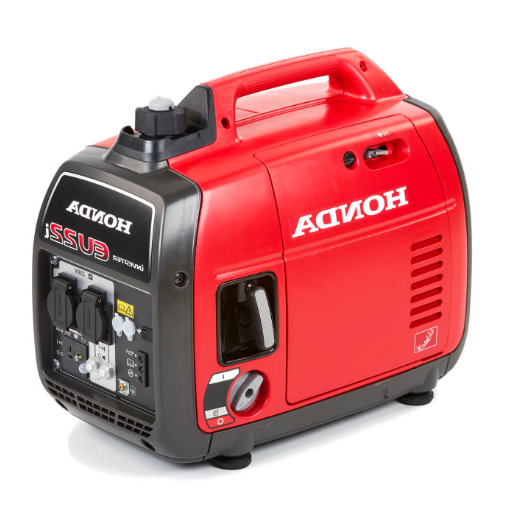
Lightweight and compact options for outdoor adventures
Whenever I’m preparing for an outdoor activity, a portable generator is always on my checklist. These pieces of machinery are much more compact than typical generators, which renders them not ideal for camping, hiking, or tailgating. In my case, weight and how much power these small sized generators can produce are the most crucial features.
The majority of portable lightweight generators usually weigh under 50 pounds, with some designs that include built in wheels or handles for easier transportation. With approximate measurements of 20 by 12 by 15 inches, these powerful generators also come in very compact sizes, which enables them to be placed and fit into limited space within a vehicle. Although small, many of these devices provide impressive power output ranging between 1,000 and 2,000 watts, which is remarkably perfect for charging devices, running small camping fridges, and powering lights that are used outdoors.
When camping, and other outdoor activities requiring generators, it is essential that devices run quietly. These compact models have been developed so that they can operate at noise levels of around 50 to 60 dB or greater, which is similar to regular human conversations. That means I’m still able to recharge the camping tools that I have without disturbing the peace campers next to me in nature.
These generators’ portability makes them invaluable when I need constant power away from the grid. Their lightweight structure and fuel consumption enable me to pack efficiently and travel without excess baggage.
Fuel efficiency in camping generators
While camping, I prioritize fuel efficiency in my generator. Being fuel economical guarantees that I achieve the maximum runtime with the least refueling, which translates to lower costs while enjoying nature. I pay attention to a few important details to make my trips hassle free.
To begin with, I take into account the runtime per gallon. Most camping generators have the capability of running on a gallon of fuel for 8-12 hours when loaded at 25%. This is perfect for overnight use or during the day when my devices need power throughout without needing to refuel the generator constantly. The type of fuel also heavily influences this; gasoline is easy to find, but propane burns cleaner and has a longer shelf life making it a good option on long trips or for emergencies.
Another important feature that I appreciate is the eco-mode functionality. With eco-mode, a generator can increase or decrease the speed of the engine depending on the power needed, leading to enhanced fuel and noise efficiency. This works perfectly for charging phones or running a fan since the resources used are low, but comfort is maintained.
My focus on fuel efficiency enables me to cut costs, eliminate fuel canisters, and lower my environmental impact. My choice of a camping generator brings convenience and cost-effectiveness, which further enhances my ability to enjoy nature.
How do cheap portable generators compare to portable power stations?
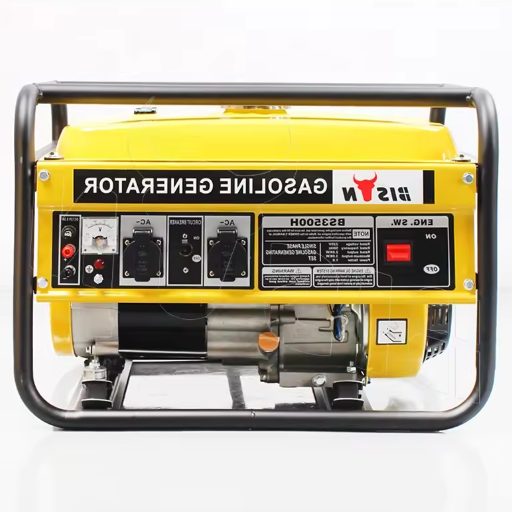
Pros and cons of generators vs. power stations
The consideration between a portable generator and a power station comes down to personal equipment requirements. While both portable power tools have their designated use, my preferences, like power output, runtime, operational noise, and the latter’s impact on the environment, are crucial for making my final decision.
In most cases, portable generators are ideal for running large appliances or multiple devices simultaneously, especially during extended outages, due to their higher power output of roughly 1000-12000 watts. However, their reliance on gasoline or propane means I have to constantly refill the generator, and its operational range of 8-12 hours does not help. While my fuel load determines the runtime of my generator, emission output and noise level also come into play, with most generators surpassing the 60 to 70 dB mark restriction their use in some sensitive camping or eco zones.
Unlike other units, power stations have no noise pollution nor emissions as they operate on rechargeable batteries. Ranging from 300 to 2,000 watts, they can suit the user whether they want to charge electronics, use small appliances, or go camping. They can be recharged using solar panels, wall outlets, or a car and don’t utilize any fuel, however, they are limited in capacity and power output, which makes them ineffective for heavier appliances over long periods, which also requires planning ahead of time. Recharging can also take several hours, which requires some planning.
The choice depends on the circumstance. The generator is a better fit if I need high power and run time. A power station is more practical for quiet and gentle, green energy use on short trips. Knowing the power trade-offs makes me choose the most reliable and ideal power option, optimizing efficiency when it is needed the most.
Battery-powered alternatives for clean energy
During my search for clean energy alternatives, I found out that my number one options are battery powered generators. They stand out from the rest due to the fact that they provide portable power and at the same time limit the impact on the environment, which makes it extremely convenient.
One major advantage is the clean operation. Battery-powered designs are more user-friendly as they do not emit any fuels which makes them fit for indoor use as well as use in more delicate environmental positions. This goes hand-in-hand with my desire of doing my part to save the environment because I can achieve my goal of cutting back on the burning fossil fuels and carbon emissions.
Most battery-powered generators contain 300 to 2,000 watt-hours(Wh), which makes it feasible for me to charge devices, run small appliances, or power equipment that is very important in trips and blackouts. A 1,000Wh model, for example, would serve a laptop around 15 charges and could use mini-fridges for several hours. Thus, it can be confidently said that it would fulfill everyday needs.
These options are a big plus. The best generators for sale are those that have a lot of means for charging. Wall outlets, car chargers, and even solar panels can be used for charging the generators. I find the opportunity to use solar energy because it is highly sustainable as well as conducive for off-grid usage. Even though charging takes much more time, my love for renewable energy sources can make it perfect.
In conclusion, these generators are the best option for camping or home use as there is no noise disruption, making them ideal for operation at any place or time. For me, battery-powered generators strike the right balance between practicality, performance, and environmental responsibility, offering a clean energy alternative I can rely on.
Reference sources
Frequently Asked Questions (FAQs)
Q: What is an inverter generator, and how does it differ from a regular portable generator?
A: An inverter generator is a type of portable generator that produces cleaner and more stable power than traditional generators. It uses advanced electronics to convert AC power to DC and then back to AC, resulting in smoother electricity suitable for sensitive electronics. Inverter generators are typically more fuel-efficient, quieter, and lighter than conventional portable generators.
Q: What is a dual-fuel portable generator?
A: A dual-fuel portable generator is a versatile power solution that can run on two different fuel types, typically gasoline and propane. This flexibility allows users to choose the most convenient or cost-effective fuel option based on availability and price. Some generators even offer tri-fuel capabilities, adding natural gas as a third fuel option.
Q: How many watts do I need for a home backup generator?
A: The wattage needed for a home backup generator depends on your specific power requirements. For essential appliances and basic comfort, a 5,000- 7,500-watt portable generator is often sufficient. However, for whole home backup, you may need 10,000 watts or more. It’s important to calculate your power needs by adding up the wattage of all the devices you want to run simultaneously.
Q: What is a transfer switch, and do I need one for my portable generator?
A: A transfer switch is a safety device that allows you to safely connect a portable generator to your home’s electrical system. It prevents backfeeding, which can be dangerous to utility workers and your appliances. If you plan to power your home’s circuits directly with a portable generator, a transfer switch is essential and often required by local building codes.
Q: Are there portable generators with electric start and remote control capabilities?
A: Yes, many modern portable generators offer electric start functionality for easy operation, and some even come with remote electric start features. These conveniences allow you to start the generator without pulling a cord and, in some cases, from a distance. Look for models that advertise “remote electric start” or “wireless remote start” in their features.
Q: What is a portable inverter generator with a CO sensor?
A: A portable inverter generator with a CO sensor is a safety-enhanced model that includes a carbon monoxide (CO) detection system. This feature automatically shuts off the generator if dangerous levels of CO are detected, reducing the risk of carbon monoxide poisoning. It’s an important safety feature, especially when using the generator in enclosed or partially enclosed spaces.
Q: How do I choose between a gas generator and a propane generator?
A: Choosing between a gas generator and a propane generator depends on your specific needs. Gas generators are typically more powerful and widely available, but propane generators offer cleaner burning fuel, longer shelf life, and easier storage. Consider factors such as fuel availability, runtime, power output, and environmental concerns. A dual fuel or tri-fuel generator can offer the best of both worlds, allowing you to use either fuel type.
Q: What are the benefits of a portable generator with USB ports?
A: Portable generators with USB ports offer the convenience of directly charging small electronic devices like smartphones, tablets, and laptops without the need for additional adapters. This feature is particularly useful during outdoor activities or emergencies when you need to keep your communication devices powered. Look for generators that offer both AC outlets and USB ports for maximum versatility.
Q: How do I maintain my portable generator to ensure reliable performance?
A: To maintain your portable generator for reliable performance, follow these key steps: regularly change the oil according to the manufacturer’s recommendations, keep the air filter clean, use fresh fuel and add a fuel stabilizer for long-term storage, run the generator periodically to prevent fuel system issues, and store it in a dry, covered area. Additionally, check and replace spark plugs as needed, and always follow the specific maintenance guidelines provided in your generator’s manual.



